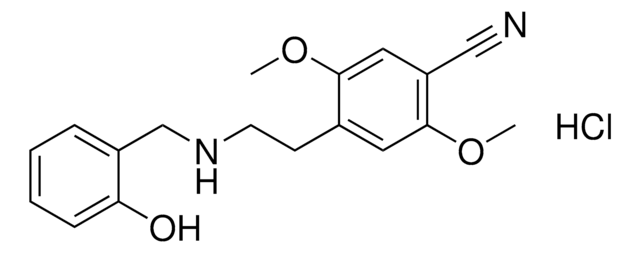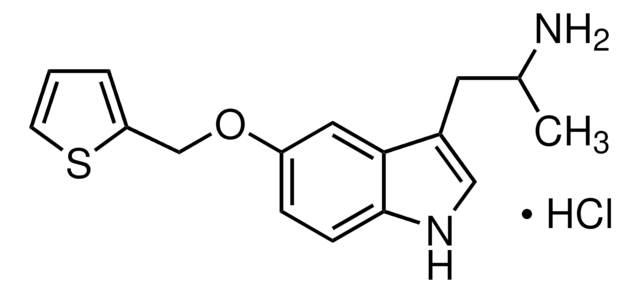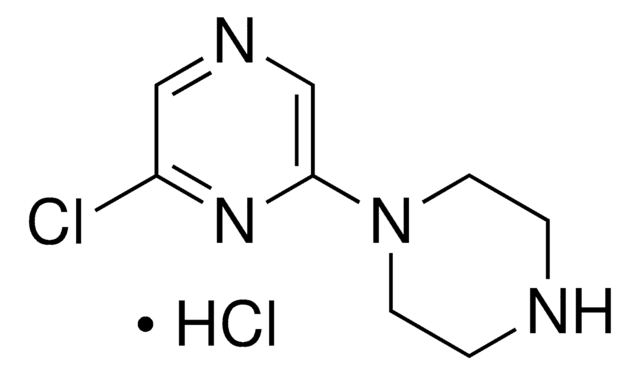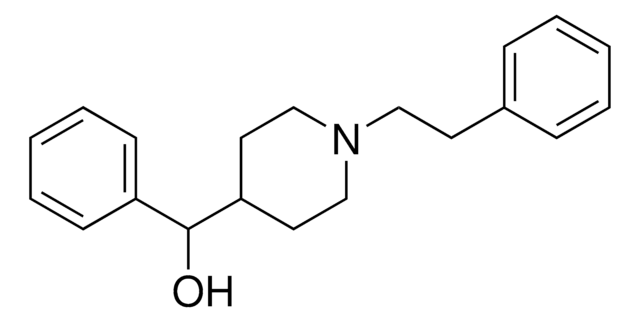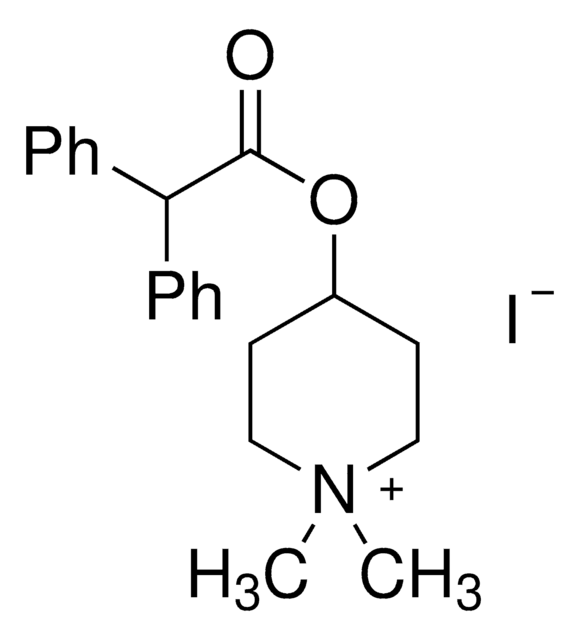PZ0408
WAY-163909 hydrochloride
≥98% (HPLC)
Synonim(y):
(7bR,10aR)-1,2,3,4,7a,9,10,10a-Octahydro-8H-cyclopenta[4,5]pyrrolo[3,2,1-jk][1,4]benzodiazepine, hydrochloride, (7bR,10aR)-1,2,3,4,8,9,10,10a-Octahydro-7bH-cyclopenta-[b][1,4]diazepino[6,7,1hi]indole, hydrochloride, WAY 163909 hydrochloride, WAY-162545 active isomer, WAY-909 hydrochloride, WAY163909 hydrochloride
About This Item
Polecane produkty
Poziom jakości
Próba
≥98% (HPLC)
Postać
powder
warunki przechowywania
desiccated
kolor
white to beige
rozpuszczalność
H2O: 2 mg/mL, clear
temp. przechowywania
room temp
InChI
1S/C14H18N2.ClH/c1-3-10-9-15-7-8-16-13-6-2-4-11(13)12(5-1)14(10)16;/h1,3,5,11,13,15H,2,4,6-9H2;1H/t11-,13-;/m1./s1
Klucz InChI
UJVFYZZBCUXMDV-LOCPCMAASA-N
Działania biochem./fizjol.
Kod klasy składowania
11 - Combustible Solids
Klasa zagrożenia wodnego (WGK)
WGK 3
Temperatura zapłonu (°F)
Not applicable
Temperatura zapłonu (°C)
Not applicable
Certyfikaty analizy (CoA)
Poszukaj Certyfikaty analizy (CoA), wpisując numer partii/serii produktów. Numery serii i partii można znaleźć na etykiecie produktu po słowach „seria” lub „partia”.
Masz już ten produkt?
Dokumenty związane z niedawno zakupionymi produktami zostały zamieszczone w Bibliotece dokumentów.
Nasz zespół naukowców ma doświadczenie we wszystkich obszarach badań, w tym w naukach przyrodniczych, materiałoznawstwie, syntezie chemicznej, chromatografii, analityce i wielu innych dziedzinach.
Skontaktuj się z zespołem ds. pomocy technicznej